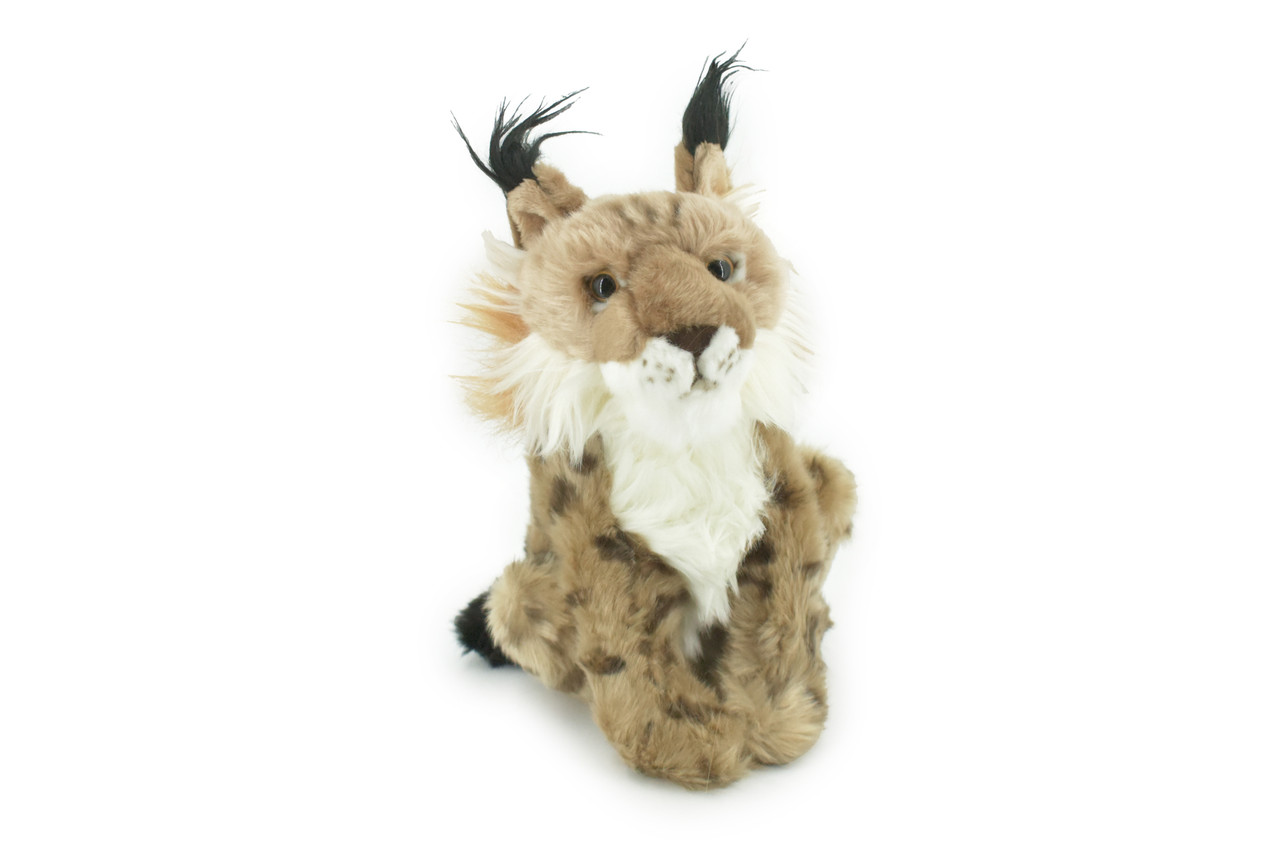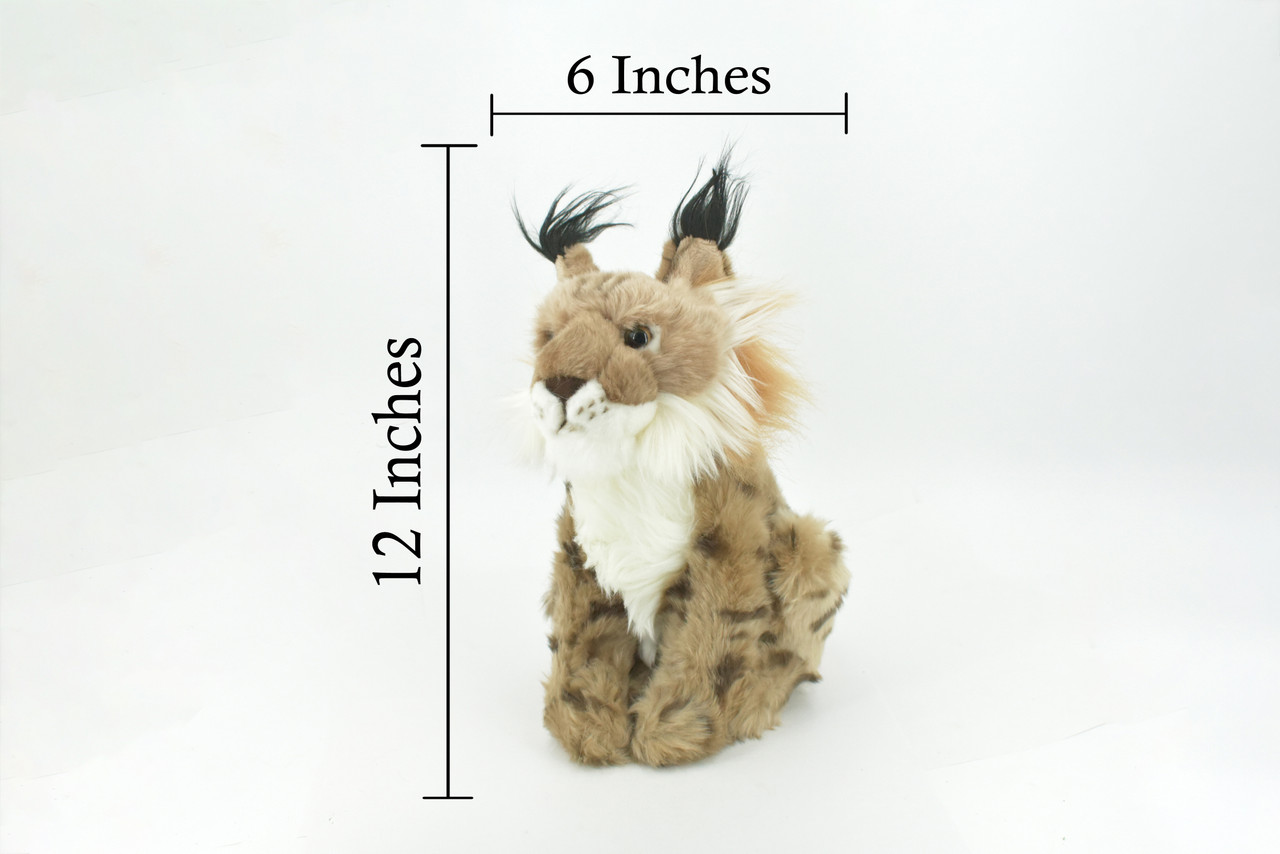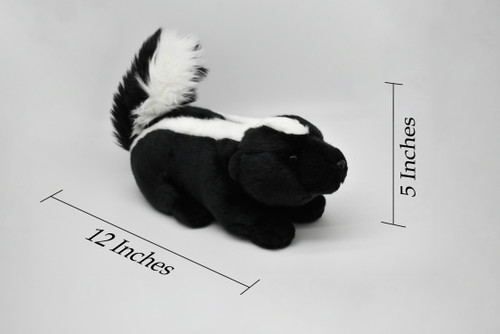Product Description
This lynx, 12" figure includes Very Nice features to give it realistic details that are true to natural anatomy. This figure is considered a high quality replica. Very Soft, and a Great Feel in your Hands.
The Canadian lynx Lynx canadensis, found in Canada and the northern US (including Alaska), is also known as the North American lynx. It has extremely thick, light brown or gray fur with light black spots. Adult males are just slightly larger than the females. Features unique to the Canadian lynx include a black tail tip and huge paws with long, thick fur to keep the cat’s toes warm in the winter. It can spread its toes out wide like snowshoes for walking in soft snow. Canadian lynx live in dense forests where their main prey, the snowshoe hare, lives. Since the hares are nocturnal, so are the cats. These cats are so dependent on the snowshoe hare for survival that when the hare population drastically drops, so does the lynx population.
The lynx is known by the tuft of black hair on the tips of its ears and its short or bobbed tail. A lynx’s keen vision earns this cat legendary status in the myths of many cultures. In Greek, Norse, and North American myths, the lynx sees what others can’t, and its role is revealing hidden truths. Even the name lynx pays tribute to the cat’s eyes. It is believed to have come from the Greek word leukos meaning white or bright, possibly a reference to the way the lynx’s eyes shine in the dark due to a reflective structure, the tapetum lucidum. However, glowing eyes aren’t an exclusive trait of lynx—all cats, and many other animals, have them. When it comes to identifying a cat as a lynx, it’s not the eyes that have it, but the ears. The lynx is known by the tuft of black hair on the tips of its ears and its short or bobbed tail. In fact, one species of lynx is called a bobcat! All lynx have these tufts, but their purpose isn’t completely clear. Some scientists think a lynx uses them like whiskers to detect things above its head. Others think the cluster of hairs enhances the cat’s hearing. Long legs and a short tail are other traits that link a cat to the lynx group. Most lynx are found in areas that often have deep layers of snow for long periods of time, and their elongated limbs help them maneuver through the habitat. Hair on the underside of their broad paws provides traction on slippery surfaces. An exception is the bobcat Lynx rufus, which doesn’t have furry soles like other lynx and generally doesn’t live in areas of heavy snow.
Thanks for visiting Collectible Wildlife Gifts, the leading provider of high-quality, lifelike animal Designs and gifts! We work hard to ensure we have a diverse range of products. Each product is inspected for their quality craftsmanship. Whether you're searching for a great gift or seeking educational designs for displays, we’ve got you covered.
At Collectible Wildlife Gifts, our products appeal to a wide range of customers, including family, friends, and educators. Our products are trusted and used by professional organizations as well including aquariums, zoos, and movie studios.
Our extensive line of products boasts everything from plush sharks to educational animal growth cycles. Our products bring joy to recipients, and serve as valuable educational resources, sparking curiosity and fostering learning.
Discover the wonders of the natural world with Collectible Wildlife Gifts. Browse our collection today!























